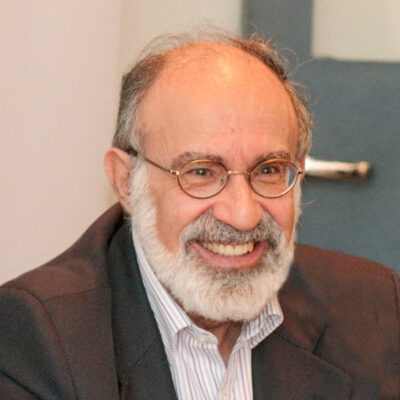 #Columns
#Columns
Innovation managers: Please listen to the users
Technological solutions are only effective when developers consider how they interact with, influence, and can be influenced by the routine of those who use them
 It is the user who will define whether something (such as a smart cane for the blind and visually impaired people) is in fact a solution—never the developer of the possible solution, and certainly not the manager | Image: Shutterstock
It is the user who will define whether something (such as a smart cane for the blind and visually impaired people) is in fact a solution—never the developer of the possible solution, and certainly not the manager | Image: Shutterstock
In my efforts to promote innovation, I am actively involved in organizing the country’s inaugural Innovation Prize, in line with Brazil’s new legislation designed to support technological advancement.
This initiative is a collaboration between the Paraná State Innovation Secretariat and the Brazilian Industrial Development Agency (ABDI), which, together, will award prototypes of Smart Canes—smart walking canes that anticipate obstacles above the waistline for the blind and visually impaired people.
When organizing the prize, our team, although experienced in fostering innovation, was faced with the completely unfamiliar domain of assistive technology.
The challenges blind and visually impaired individuals face in terms of orientation and mobility present a radically different paradigm, one that is difficult for our team to fully grasp.
Through this project, our goal is to encourage the creation of genuinely impactful solutions, irrespective of their technological complexity. We do so because we believe that technology should be a tool for enhancing quality of life and longevity, rather than an end goal.
Consequently, when defining the award criteria and the challenge itself, it became clear that simply simulating the use of a walking cane while blindfolded would not suffice. Overcoming our own lack of understanding required extensive listening, numerous conversations, and, of course, plenty of coffee.
Ultimately, the use of any technology is inherently human—a tacit, subjective, and socially constructed process.
For this population, the challenges they face are far more intense. The first major task, which consumed considerable time, was to sift through the complex array of problems encountered by this community and determine which could be addressed with the resources currently available, and within that scope, identify which would require technological innovation.
This was no simple feat. Life for visually impaired individuals in Latin America’s largest country is hard. Poverty is widespread, sidewalks are scarce, respect is lacking, and their needs are frequently overlooked.
Multiple Challenges
Selecting a single issue to address in this context was, in itself, a profound exercise in aligning concrete needs with technological capabilities and the market.
In short, we had to immerse ourselves in an entirely new world, one filled with all sorts of misunderstandings.
We ultimately chose to focus on the challenge of anticipating obstacles above the waistline because we recognized that this is a historically significant problem that could be addressed through technological innovation.
It was at this juncture that we, sighted people (yes, that’s what we’re called), as developers of technology, came to the realization of how little we understood about the reality of blind and visually impaired individuals and the daily obstacles they face.
Of all the things we learned, the most striking was that adding more technological features to a cane does not necessarily translate to greater value for the user. In fact, the opposite is often true.
Throughout the process, we came to understand that focus is essential for orientation and mobility. This is precisely why no one goes out using a cane without first learning how to use it, no matter how simple it may be.
One must learn to focus attention on what matters and ignore what doesn’t pose a risk.
A cane packed with gadgets, beeping, and vibrations might seem useful to an innovation manager, but not to a visually impaired person who perceives the world differently.
In a way, this challenges the view of one of the great innovators of the early millennium, Steve Jobs (1955–2011), who famously said: “People don’t know what they want until you show it to them.”
This reflects the long, complex gap between technological possibility and a truly effective, safe, and functional solution.
The determination of whether something constitutes a true solution lies with the user—never with the developer of the potential solution, and certainly not with the manager.
It is not merely a matter of testing functionalities against precise metrological metrics, but about understanding how technology interacts with and is influenced by the user, as well as the environment in which they navigate their daily life.
Disconnecting potential users from the development of technological solutions leads to the creation of “white elephants”—products that are never effectively utilized and fail to foster human development.
Ultimately, it all comes down to being “human, all too human.”
Currently, the prize for walking canes is underway, and the team responsible is still discovering and learning. For all these reasons, it is important to state the obvious but necessary message to developers, policymakers, and project managers: listen to the users!

André Tortato Rauen is an economist with a PhD in science & technology policy from the University of Campinas (UNICAMP), currently a professor at the College of the Federal Public Audit Office (TCU). He is also a special advisor to the Brazilian Industrial Development Agency (ABDI).
Opinion articles do not necessarily reflect the views of Science Arena or Hospital Israelita Albert Einstein.
*
This article may be republished online under the CC-BY-NC-ND Creative Commons license.
The text must not be edited and the author(s) and source (Science Arena) must be credited.





